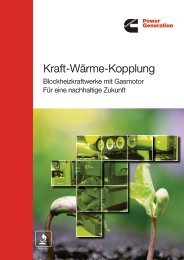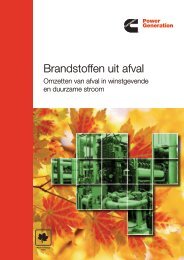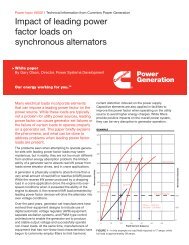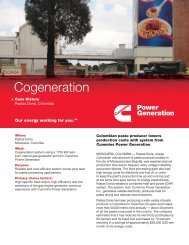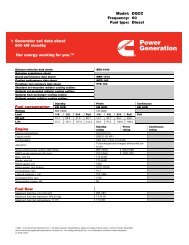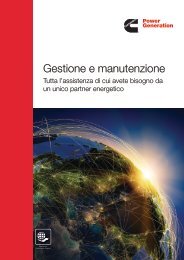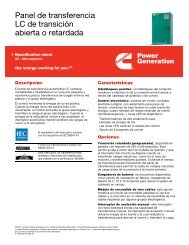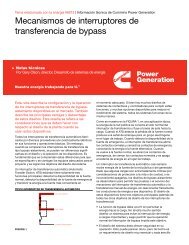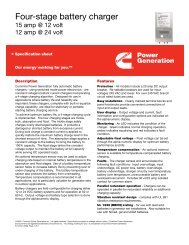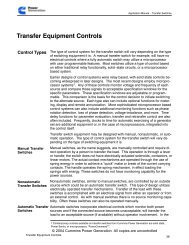appendix
appendix
appendix
Create successful ePaper yourself
Turn your PDF publications into a flip-book with our unique Google optimized e-Paper software.
LINE<br />
APPENDIX B<br />
3<br />
2<br />
1<br />
Autotransformer<br />
Motor Starting,<br />
Open Transition<br />
LINE<br />
MOTOR STARTING DIAGRAM<br />
MOTOR<br />
START: CLOSE 1–2–3<br />
RUN: NO CHANGE<br />
5<br />
4<br />
Autotransformer<br />
Motor Starting,<br />
Closed Transition<br />
Rev. Jan 2011<br />
kVA & TORQUE (% F. L.)<br />
600<br />
500<br />
400<br />
300<br />
200<br />
100<br />
Application Manual – Liquid Cooled Generator Sets<br />
TYPICAL TORQUE AND KVA CURVES FOR<br />
SQUIRREL CAGE INDUCTION MOTORS<br />
TORQUE<br />
KVA<br />
20 40 60 80 100<br />
SPEED (% SYNCHRONOUS)<br />
Starting: The autotransformer is in the circuit only during starting to reduce voltage to the<br />
motor. The opening of the circuit during transition can cause severe transients, which<br />
may even be able to cause nuisance tripping of circuit breakers.<br />
Application Notes: Open transition switching of reduced voltage starters should be<br />
avoided in generator set applications, especially when the motors are not brought up to<br />
full speed at the time of transition. The reason for this is that the motor slows down and<br />
gets out of synchronization during the switching transition. The result is similar to<br />
paralleling generator sets out of phase. The kVA drawn immediately after switching can<br />
exceed starting kVA. Also note that the starting power factor is lower when an<br />
autotransformer is used.<br />
MOTOR STARTING DIAGRAM<br />
8<br />
6<br />
3<br />
1<br />
7<br />
2<br />
MOTOR<br />
START: CLOSE 2–3–5–6–7<br />
RUN: OPEN 2–3–5–6–7; CLOSE 1–4–8<br />
kVA & TORQUE (% F. L.)<br />
600<br />
500<br />
400<br />
300<br />
200<br />
100<br />
TYPICAL TORQUE AND KVA CURVES FOR<br />
SQUIRREL CAGE INDUCTION MOTORS<br />
TORQUE<br />
KVA<br />
20 40 60 80 100<br />
SPEED (% SYNCHRONOUS)<br />
Starting: The circuit is not interrupted during starting. During transfer, part of the<br />
autotransformer winding remains in the circuit as a series reactor with the motor<br />
windings.<br />
Application Notes: Closed transition is preferred over open transition because of less<br />
electrical disturbance. The switching, however, is more expensive and complex. It is the<br />
most commonly used reduced voltage starting method for large motors with low load<br />
torque requirements, such as sewage lift pumps and chillers. The principle advantage is<br />
more torque per current than with other reduced voltage starting methods. Operation can<br />
be automatic and/or remote. Also note that the starting power factor is lower when an<br />
autotransformer is used.<br />
B–3



